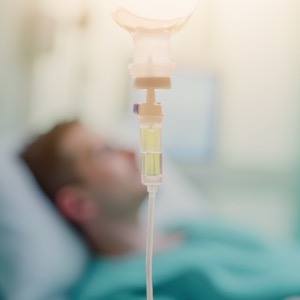Originally published by our sister publication Pharmacy Practice News
By Marcus A. Banks
Recent literature shows that cefepime may be emerging as a preferred empiric therapy for critically ill patients with sepsis, compared with piperacillin-tazobactam (PIP/TAZO); that a prolonged infusion of beta-lactam antibiotics to treat critically ill sepsis may decrease mortality; and that de-escalation of broad-spectrum antibiotics used to treat sepsis could reduce the development of antibiotic-resistant bacteria.

Susan Smith, PharmD, BCPS, BCCCP, FCCM, an associate professor at the University of Georgia College of Pharmacy, in Athens, discussed these findings at the 2025 Congress of the Society of Critical Care Medicine. All three studies that Dr. Smith described were published in 2024.
The first is a retrospective look at 90-day mortality patterns in patients with sepsis who were treated with vancomycin and cefepime compared with those treated with vancomycin and PIP/TAZO at the University of Michigan (JAMA Intern Med 2024; 184[7]:769-777).
“Although it was retrospective, it had a pretty robust study design,” Dr. Smith said. Specifically, the authors used instrumental variable analysis to emulate a randomized controlled trial. The University of Michigan experienced a 15-month PIP/TAZO shortage in the middle of the study period; the authors examined records before and after the shortage to avoid bias due to temporal changes in sepsis outcomes during the four-year study period.
Of 7,569 adults treated for suspected sepsis, 4,523 received PIP/TAZO and 3,046 received cefepime. There was an absolute mortality increase of 5.0% at 90 days (95% CI, 1.9%-8.1%) in the PIP/TAZO arm. Even so, factors like the potential of cefepime to cause neurotoxicity and its lack of anaerobic activity mean it is not always advisable.
“Data affecting the cefepime versus piperacillin-tazobactam decision is conflicting and has notable limitations, while newer evidence may point toward cefepime. Individual patient factors should be considered when choosing between agents,” Dr. Smith said.
The BLING III trial (JAMA 2024; 332[8]:629-637) evaluated mortality rates for a continuous 24-hour infusion of beta-lactam antibiotics compared with intermittent infusions over 24 hours, when treating sepsis. There was no statistical difference in 90-day mortality in the primary analysis. Among the 3,474 patients who received a continuous infusion and 3,507 who received intermittent infusions, 24.9% had died after 90 days in the continuous infusion arm and 26.8% in the intermittent arm (absolute difference, −1.9%; 95% CI, −4.9% to 1.1%; odds ratio, 0.91; 95% CI, 0.81-1.01; P=0.08).
Despite no significant difference in the primary analysis, an adjusted analysis accounting for important confounders like sex, severity of illness, sources of admission and type of beta-lactam before randomization, favored continuous infusion. Clinical cure—defined as not needing to restart antibiotic therapy after completing a beta-lactam course—was also better in the continuous-infusion arm (1,930/3,467 [55.7%] and 1,744/3,491 [50.0%]; absolute difference, 5.7%; 95% CI, 2.4%-9.1%).
“We have some evidence supporting prolonged infusion strategies, so I think it’s important to consider whether there are any downsides,” Dr. Smith said. For example, continuous infusions may be incompatible with other medications and require a dedicated line, and the cost-effectiveness of continuous infusion is unknown (JAMA 2024;332[8]:623-625).
The final study, a retrospective analysis, compared 60-day rates of new gram-negative bacterial resistance after at least three days of treatment with broad-spectrum antibiotics (Clin Infect Dis 2024;79[4]:826-833). There were 644 cases of new gram-negative resistance within the first 60 days of entering the cohort, among 7,742 people, for an incidence rate of 1.85 (95% CI, 1.71-2.00) per 1,000 patient-days. The lowest incidence was seen for people who had undergone dose de-escalation: 1.42 (95% CI, 1.16-1.68) per 1,000 patient-days.The hazard ratio for de-escalation compared with no change was 0.59, indicating a statistically significant reduction in the development of new gram-negative resistance with de-escalation, she explained.
These findings call for “daily evaluation of de-escalation of empiric antibiotics,” Dr. Smith said.
Dr. Smith reported no relevant financial disclosures.

